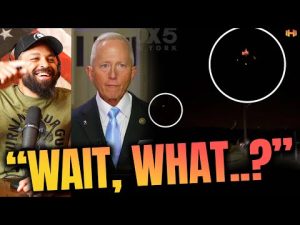Recently, a conversation arose regarding the response to devastating natural disasters, showcasing a stark divide in leadership styles and effectiveness between administrations. Former Congresswoman Tulsi Gabbard spoke candidly about her frustrations with the current administration’s response to recent calamities, particularly wildfires and hurricanes. With a heavy heart, Gabbard extended her sympathy to those affected, emphasizing that as communities struggle to recover, they are met with a federal response that leaves much to be desired.
Gabbard’s sentiments reflect concerns from various affected areas, including communities hit by Hurricane Helene. She recounted her experience visiting Lahaina and West Maui shortly after tragic wildfires swept through, taking lives and leaving neighborhoods in ruins. Upon arrival, she found that federal officials were notably absent. Instead, locals were left to pick up the pieces, relying solely on one another for support in a time of desperate need. This situation mirrors stories she has heard from friends facing challenges in Asheville, North Carolina, affirming that many are grappling with a lack of basic resources like water and communication, much like the residents of Maui did.
Visitors to these devastated areas have noted a remarkable absence of active leadership on the ground. While FEMA officials might be stationed in government buildings downtown, there is a significant lack of boots on the ground in communities that desperately need help. Gabbard’s criticisms shine a light on what seems to be a bureaucratic approach where quick, actionable responses are overshadowed by a focus on red tape and protocol.
It’s hard for Gabbard to fathom why FEMA’s leadership, particularly Administrator Deanne Criswell, is unable to mobilize effectively in the wake of such foreseen disasters. Gabbard has questioned whether Criswell is truly qualified for the role. The notion that the government should be a well-oiled machine during emergencies is not unfounded; preparedness is key. Gabbard suggests that in situations where disasters are anticipated days in advance, such as Hurricane Helene, cutting through bureaucratic hurdles should be prioritized.
In times of crisis, communities look for clear action from their leaders, and not just promises. The contrast between the current administration’s response and that of the previous Trump administration could not be more evident. Gabbard’s reflections on effective leadership emphasize that in critical situations, a Commander-in-Chief needs to be more than just a figurehead who listens to briefings. They must take immediate action and demand results. The takeaway echoes through both policy and personality: proactive teamwork and decisive action can be the difference between lives saved and lives lost.







